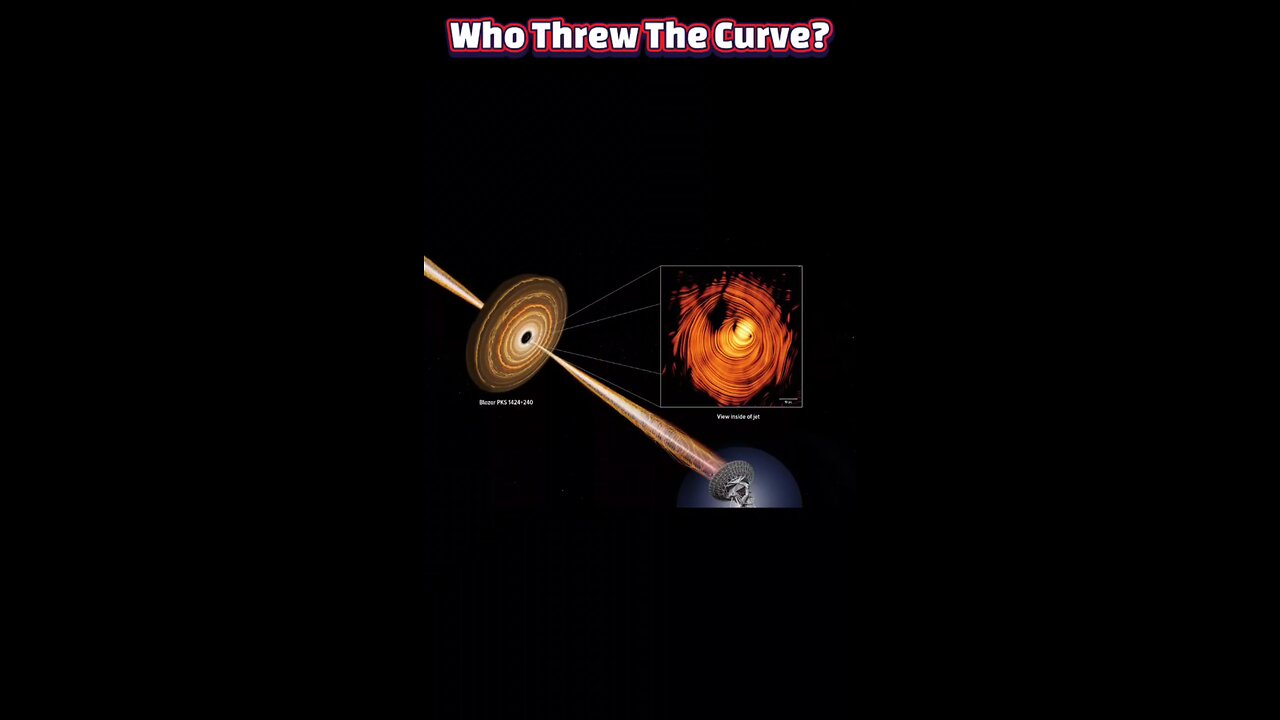Premium Only Content

Astronomers Stunned by Real-Life “Eye of Sauron” Aimed at Earth
#EyeOfSauron #SpaceMystery #BlazarBlast #CosmicPhenomena #AstronomyNews #TerrifyingUniverse #PKS1424 #BlackHoleJet #NeutrinoStorm #SciFiMeetsReality
From the moment researchers unveiled a new image of the blazar PKS 1424+240, nicknamed the “Eye of Sauron,” the astronomical community stopped in its tracks. With striking artificial colors, the view resembles the ominous gaze of Tolkien’s Dark Lord, staring unblinkingly at our planet. Though this cosmic leviathan sits some 7.4 billion light-years away, its direct alignment has amplified its appearance, capturing imaginations worldwide.
Blazars are a special class of active galactic nuclei powered by supermassive black holes, launching twin jets of charged particles at nearly light speed. What sets PKS 1424+240 apart is its jet’s near-perfect alignment with Earth, meaning its high-energy gamma rays and neutrinos hit us head-on. This geometry boosts its observed brightness dramatically, making it among the most luminous neutrino sources ever recorded.
Yet the “Eye of Sauron” presented a cosmic paradox: how could its jets appear to move sluggishly if they were responsible for such intense emissions? Astronomers resolved this puzzle by recognizing a classic optical illusion. The jet’s precise alignment with our line of sight both slows its apparent motion and magnifies its luminosity by a factor of thirty or more, reconciling the blazar’s extreme neutrino and gamma-ray output with relativistic physics.
The true marvel emerged after fifteen years of observations with the Very Long Baseline Array (VLBA). Scientists stitched together radio data to reveal a near-perfect toroidal magnetic field threading the jet, a coiled spring accelerating particles to extraordinary energies. This ring-shaped configuration not only explains the blazar’s neutrino emissions but also sheds light on the jet-magnetic field interplay at supermassive black hole cores.
Peering into the “Eye of Sauron” does more than thrill, it advances our understanding of cosmic accelerators and the nature of black hole environments. By decoding the magnetic architecture and projection effects of PKS 1424+240, astronomers gain a template for interpreting other extreme jets across the universe. In the end, this distant, fearsome eye becomes a beacon guiding us deeper into the high-energy cosmos.
-
 40:24
40:24
The Connect: With Johnny Mitchell
2 days ago $17.41 earnedInside The WORST Drug-Infested Slums Of Medellin, Colombia
56.6K27 -
 4:14
4:14
GritsGG
13 hours ago2 Warzone Easter Eggs! How to Find Them EASILY!
1.52K -
 LIVE
LIVE
Lofi Girl
2 years agoSynthwave Radio 🌌 - beats to chill/game to
147 watching -
 1:45:43
1:45:43
Man in America
13 hours agoThe DISTURBING Truth About Parasites — Live Q&A w/ Dr. Jason Dean
66.5K38 -
 7:13:47
7:13:47
SpartakusLIVE
9 hours ago#1 Mountain of Muscle with HUGE Legs saves your weekend from complete BOREDOMNight HYPE
42.3K1 -
 47:42
47:42
Sarah Westall
10 hours agoFreedom or Slavery? AI will Change Everything w/ Trump Senior Advisor Marc Beckman
52.2K12 -
 2:23:20
2:23:20
vivafrei
17 hours agoEp. 285: Visa Revocation No-Go! Sortor Arrested! Ostrich Crisis! 2A Win! Comey Defense & MORE!
111K106 -
 5:55:11
5:55:11
CassaiyanGaming
7 hours ago🟢LIVE - VISITING GOOB LAGOON! - Will They Rip Me Off?!? Waterpark Simulator
39.4K4 -
 5:42:21
5:42:21
EricJohnPizzaArtist
6 days agoAwesome Sauce PIZZA ART LIVE Ep. #64: Robbie “The Fire” Bernstein
47K2 -
 2:23:58
2:23:58
Nerdrotic
10 hours ago $16.80 earnedDeDunking the Debunkers with Dan Richards | Forbidden Frontier #119
61.5K15
